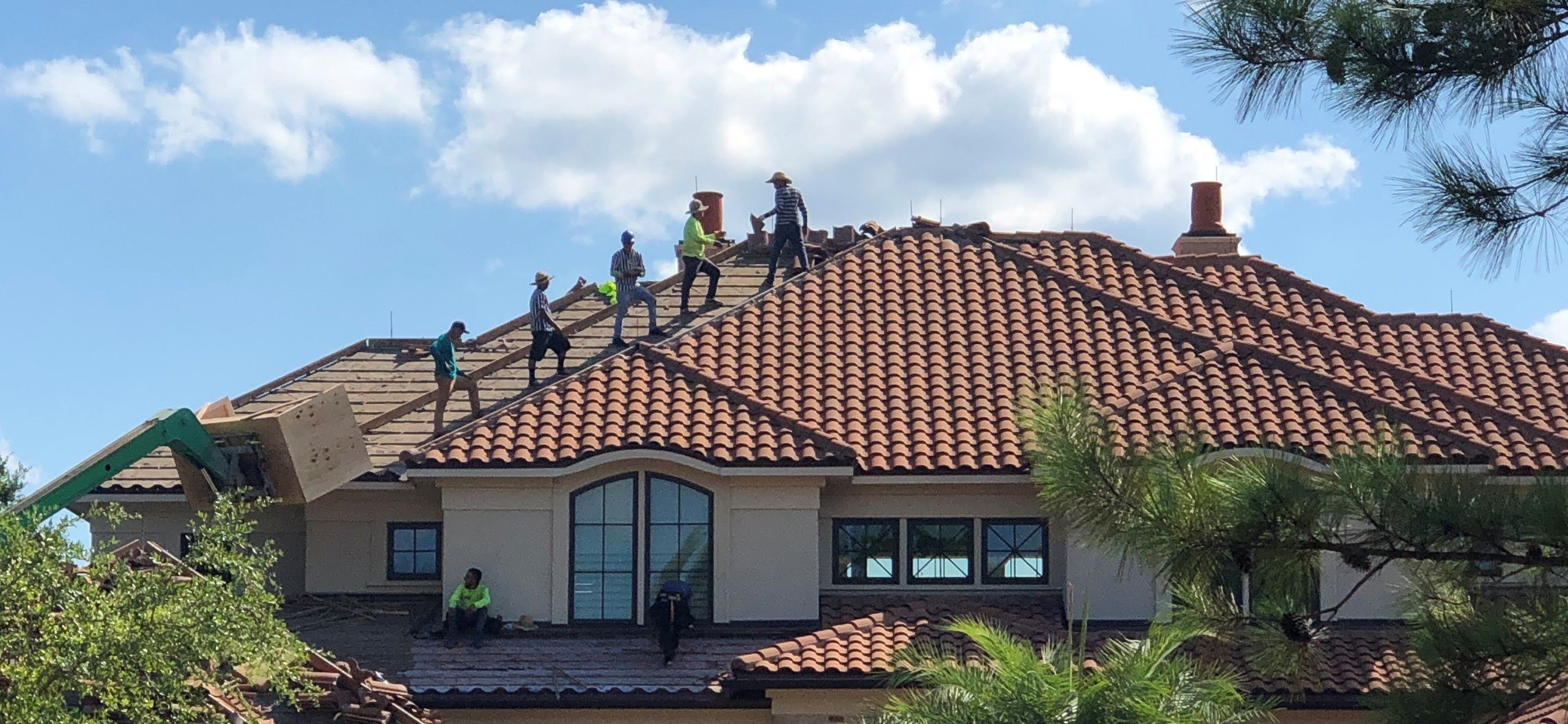Neighborhood Insights on Roofing Companies Gainesville Florida Homeowners Prefer
Wiki Article
Finest Practices for Ensuring Appropriate Roof Ventilation
A well balanced intake and exhaust air vent ratio, frequently 1:300, plays a critical function, with consumption vents ideally placed at the reduced edge of the roofing for amazing air access and exhaust vents at the peak for cozy air leave. Maintaining insulation away from vents is essential to stop air movement restriction.Understand Ventilation Essentials
Properly recognizing ventilation fundamentals is crucial for guaranteeing the long life and performance of roofing systems. Reliable ventilation minimizes moisture accumulation and temperature extremes in the attic room, both of which can cause considerable structural damages with time. A well-ventilated roofing helps in avoiding usual problems such as mold development, wood rot, and ice dams, which can jeopardize the stability of the roof materials and the underlying structures.The primary objective of ventilation is to help with the activity of air, permitting for a constant exchange in between the outdoor and interior settings. This equilibrium is accomplished via a combination of consumption and exhaust vents that collaborate to preserve optimal air flow. Consumption vents, normally located along the eaves or soffits, enable fresh air to go into the attic area, while exhaust vents, frequently situated at or near the roof ridge, make it possible for warm, humid air to leave.
Secret factors affecting the efficiency of roof covering ventilation consist of correct placement, ample sizing, and guaranteeing that both consumption and exhaust vents are unhampered. Normal examination and upkeep are critical to recognize possible obstructions, damages, or inadequacies in the air flow system, thereby securing the roof's efficiency and toughness.
Types of Roofing Vents
Roof covering vents play a vital duty in preserving efficient attic ventilation and, by extension, the general health of the roof. Various kinds of roofing system vents are readily available, each with special advantages tailored to particular roof covering demands. Ridge vents, for instance, are set up along the roof's height, enabling cozy, damp air to escape from the attic room. They use constant ventilation and mix flawlessly with the roofline, making them both efficient and visually pleasing.
Soffit vents are mounted under the eaves and job in tandem with roofing vents to guarantee a balanced intake and exhaust system. By enabling cooler air to enter from below, soffit vents facilitate the expulsion of hot air with upper vents. Gable vents, located on the outside walls of the attic, deal one more reliable service, especially in homes with gable roofing systems.
Assess Your Existing Ventilation

Following, consider the age and problem of your roofing materials and ventilation components. Older systems might not abide by current building ordinance or might have deteriorated in time, reducing their efficiency. Conduct a thorough examination to determine any kind of indications of wear and tear, such as corrosion, damage, or voids that can compromise the system's performance.
Furthermore, measure the attic temperature level and humidity degrees. High temperature levels and moisture can indicate poor ventilation.
Setup Best Practices
Effective installation of roof covering ventilation systems is extremely important for ensuring ideal performance and durability. Appropriate installment begins with understanding the certain air flow needs of the structure and the roof covering it covers. This includes computing the correct ratio of intake to wear down vents, commonly adhering to the 1:300 guideline, which stipulates one square foot of ventilation for every 300 square feet of attic room flooring area.
Consumption vents should be set up at the roofing's lower side, usually in the soffits, to permit amazing air to get in. Exhaust vents, on the other hand, should be set up near or at the roofing system's optimal to facilitate the leave of warm, damp air.
Seal all vent connections thoroughly to avoid air leakages and potential water seepage. Usage top quality materials and follow maker guidelines to guarantee durability and performance. Additionally, integrating ridge vents with baffles can significantly enhance air flow efficiency by stopping wind-driven rain and snow from getting in the attic room.
Inevitably, precise installment of roof air flow systems minimizes possible problems such as mold development, ice dams, and architectural damage, guaranteeing the roof covering's honesty and the structure's general health.
Regular Upkeep Tips
Consistency in maintenance methods is fundamental to ensuring the long-lasting efficiency of roof covering ventilation systems. During these assessments, make sure that vents browse around here are complimentary of debris, nests, and various other blockages that could restrain air movement.
Cleaning the vents is an additional crucial task. Make use of a soft brush or a vacuum cleaner to eliminate dust and debris from intake and exhaust vents. Beware not to damage the air vent displays or louvers throughout the process. In addition, evaluate the attic room room for any type of signs of water damage, which can jeopardize the honesty of the roof system.
Proper insulation is equally vital. Make sure that attic room insulation does not block the vents, as this can seriously restrict air flow. If any insulation has changed or worked out, you can try these out rearrange or change it to maintain an effective obstacle.
Lastly, change any harmed or missing out on components without delay. Busted vents, split tiles, or worn-out flashing can all contribute to poor air flow and should be addressed right away. Normal maintenance makes certain that the roofing air flow system works ideally, consequently prolonging the life-span of the roofing itself.
Conclusion
Guaranteeing appropriate roof covering ventilation is paramount for keeping the efficiency and durability of a roofing system. Adherence to the 1:300 intake and exhaust air vent proportion, combined with the calculated positioning of vents, is crucial.A well balanced consumption and exhaust vent ratio, typically 1:300, plays a pivotal role, with intake vents preferably positioned at the lower side of the roof covering for cool air entrance and exhaust vents at the peak for warm air leave. Intake vents, generally located along the eaves or soffits, enable fresh air to go into the attic room room, while exhaust vents, typically located at or near the roof covering ridge, allow warm, moist air to leave.
Soffit vents are installed under the eaves and job in tandem with roofing vents to guarantee a well balanced consumption and exhaust system. By allowing cooler air to go into from below, soffit vents help with the expulsion of warm air with upper vents. Adherence to the 1:300 consumption and exhaust air vent ratio, paired with the calculated placement of vents, Continue is necessary.
Report this wiki page